Among all the coins ever struck by the U.S. Mint, not many coin series can hold a candle to the popularity of V-Nickels among coin collectors. Released between the late 19th and early 20th centuries, these nickels enjoyed extensive use during their time in circulation. So much so that it is hard to find mint-state V-Nickels.
Since the 1911 Nickel is one of the last V-Nickels, it offers one of the best opportunities for finding good examples. For this reason alone, collectors are willing to trade an arm and a leg to get their hands on a 1911 V-Nickel. The only question left is, what is the value of a 1911 Nickel?
Well, let’s find out.
1911 Nickel Valuation Chart
| Mint | Good (G4) | Fine (F12) | Extremely Fine (XF40) | Uncirculated
(MS60) |
Brilliant Uncirculated (MS65) |
| 1911 Nickel | $5 | $9 | $45 | $120 | $450 |
| 1911 Proof Nickel | – | – | – | $250 | $600 |
Source: PCGS, 2023
1911 Nickel: Historical Background
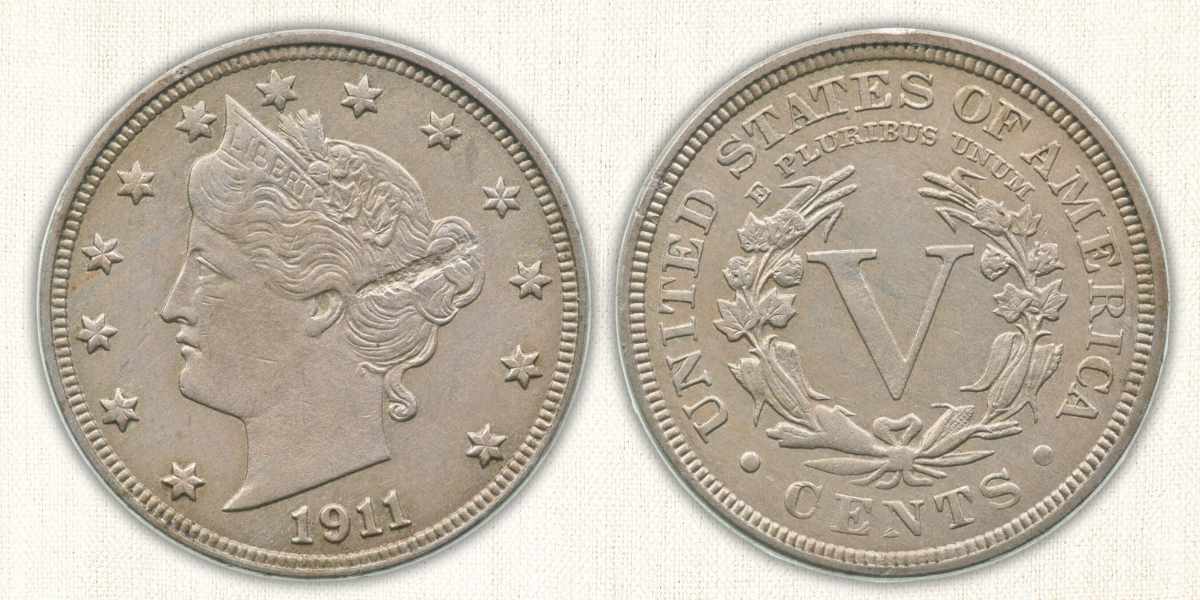
The 1911 Nickel goes by a couple of names. Because the obverse bears the head of Lady Liberty, it has become acceptable to call it the 1911 Liberty Head Nickel. Similarly, because there’s a giant “V” plastered on the back, you can also refer to it as the 1911 V Nickel. But where did it come from?
The 1911 Nickel belongs to the greater Liberty Head Nickel (or V Nickel) coin series. These coins were minted for circulation between 1883 and 1912, making the 1911 Nickel second last of the series. However, a couple of V Nickels were struck for the 1913 issue year, but I digress.
The V Nickels replaced the Shield Nickel, a coin notorious for production problems. And even though the Liberty Head Nickel seized production in 1913, it enjoyed heavy use in the ‘40s and ‘50s when the nation was experiencing an economic boom.
So why do coin collectors flock to the Liberty Head Nickels? Because the coin series is a perfect recipe, combining a pinch of history and a spoonful of nostalgia. Sprinkle in the rarity, and you have a very valuable coin.
1911: Physical Features
What makes a 1911 Nickel? As its name suggests, some nickel and some copper. Despite adopting the name “Nickel,” copper is the dominant metal, contributing 75% of the coin’s metallic composition.
As for the coin’s other physical features, please refer to the table below:
1911 Nickel: Physical Characteristics
| Physical Feature | Notes |
| Metallic Composition | 75% Copper
25% Nickel |
| Weight | 5 grams |
| Diameter | 21.21 mm |
| Edge | Plain/Smooth |
Obverse Design and Features

The 1911 Nickel’s obverse is a product of an era when coins couldn’t bear the images of actual people. For the 1911 Nickel’s obverse, the U.S. Mint ran with Liberty, a design made by the now iconic U.S. Mint engraver Charles E. Barber.
Mr. Barber was so fond of Greco-Roman marble statues that he let the style bleed into his work. Barber’s designs were so distinct that numismatists coined the term “Barber Coins” to refer to the series of coins bearing Charles Barber’s designs.
Charles Barber’s V Nickel’s obverse design included the following elements for the issue year 1911:
- The left-facing Image of the goddess of Liberty is prominently placed at the center of the coin
- The word “LIBERTY” is engraved on Lady Liberty’s crown
- 13 stars arch over Lady Liberty’s portrait, each representing one of the original 13 colonies
- The issue year “1911” is struck directly under Lady Liberty’s portrait
- Reedsdecorate the rim of the obverse, literally rounding up the design
Reverse Design and Features
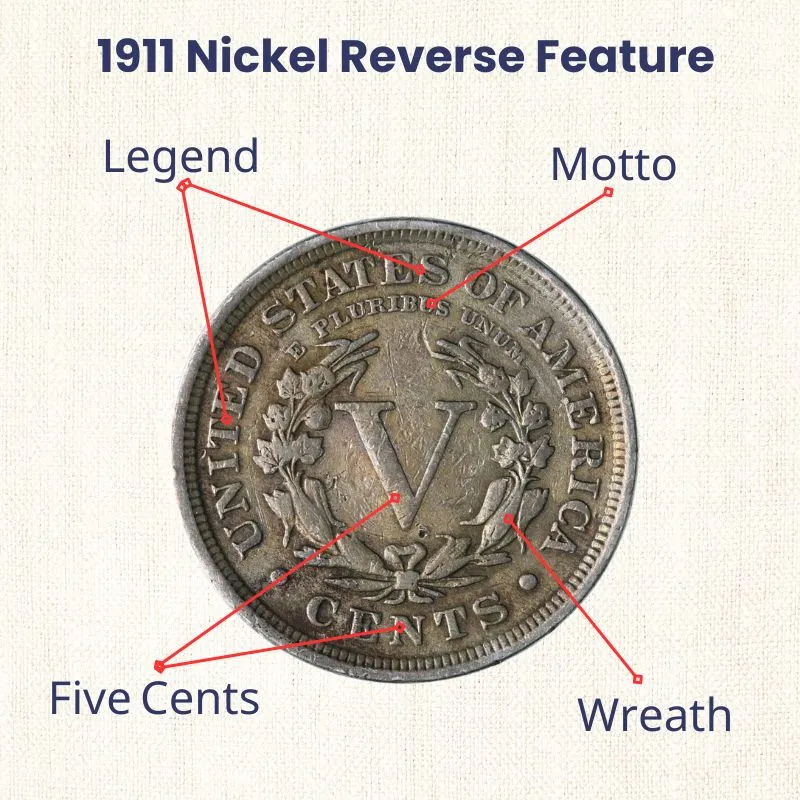
The obverse was also designed by the U.S. Mint Chief Engraver at the time, Charles E. Barber. He was keen to include the following in his design:
- The Roman numeral “V” is stamped prominently at the coin’s center, representing five cents.
- A mixed material wreath(cotton, corn, and wheat) partially encircles the “V.”
- The country of issue, “UNITED STATES OF AMERICA,” arches over the wreath
- The motto “E PLURIBUS UNAM” arches under the country of issue
- The word “CENTS” arches under the wreath’s bow
- Reedsalso decorates the rim of the reverse
1911 Nickel: Varieties and Valuation
At the time, the law designated the Philadelphia Mint as the production site for nickels and pennies. So, all 1911 Nickels were struck with no mint marks. The Philadelphia Mint also struck a handful of proof coins (again, with no mint marks). So, the 1911 Nickel only had two varieties: regular-struck coins and proof coins.
How have the values of these coins faired against the test of time? Let’s find out.
1911-P Nickel Value
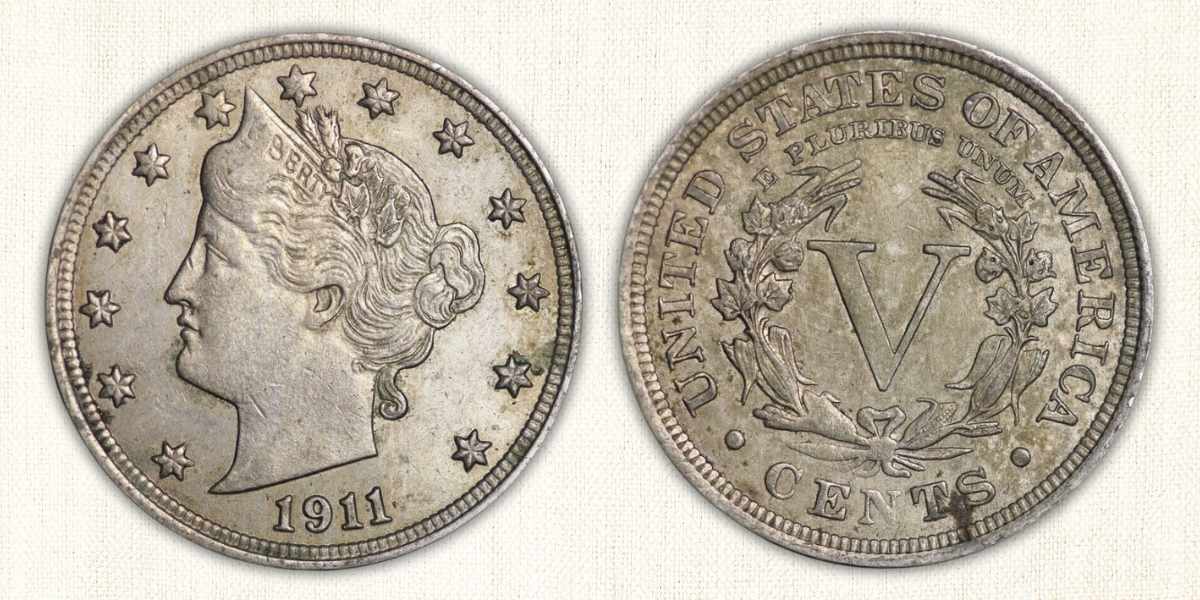
Prior to 1906, only pennies and nickels could be struck at the Philadelphia Mint. For the issue year 1911, the Philadelphia Mint struck 39,559,372 of these silver-colored V Nickels. As is tradition with the Philly Mint, all these coins came out with no mint marks.
According to the latest figures (July 2023) on the PCGS website, a good-condition (G4) 1911-P Nickel is worth $5. Of course, this valuation depends on the condition of the coin, with G6 nickels selling for approximately $6.
Fine-condition 1911 Liberty Head Nickels are worth $9 for F12 grade coins and $10 for F15 nickels. Very fine examples can cost you $15 for VF20 coins and $25 for VF30-graded nickels. Uncirculated MS60 1911 Nickels are worth $120, with higher-grade MS65 coins selling for $450.
The most expensive 1911-P Nickel is this golden MS67 nickel that sold for $14,687.50. It is tied with a couple of other 1911 Nickels for the finest example certified by PCSG.
1911 Proof Nickel Value

On top of the regular 1911 Nickels, the Philadelphia Mint struck a bunch of 1911 Proof Nickels, 1733 coins to be exact. Proof coins are specially struck and hand-polished versions of a coin.
In the olden days, they struck proof coins to test the dies and keep the resulting coins for archival purposes. These days, mints make proof coins specifically for collectors.
The 1911 Proof Nickel looks like any other 1911 Liberty Head Nickel except for its polished appearance. Proof coins are also graded, and their value increase with the quality of the grade.
These days, a 1911 Proof Nickel that’s graded PR60 is worth $250. Nickels graded PR68 are so rare and beautiful that they could sell for up to $10,000.
The most valuable 1911 Proof Nickel is graded PR67+, and it sold for a record shuttering $9,600. This coin is covered in a golden patina with sprinkles of blue, rose, and green colors.
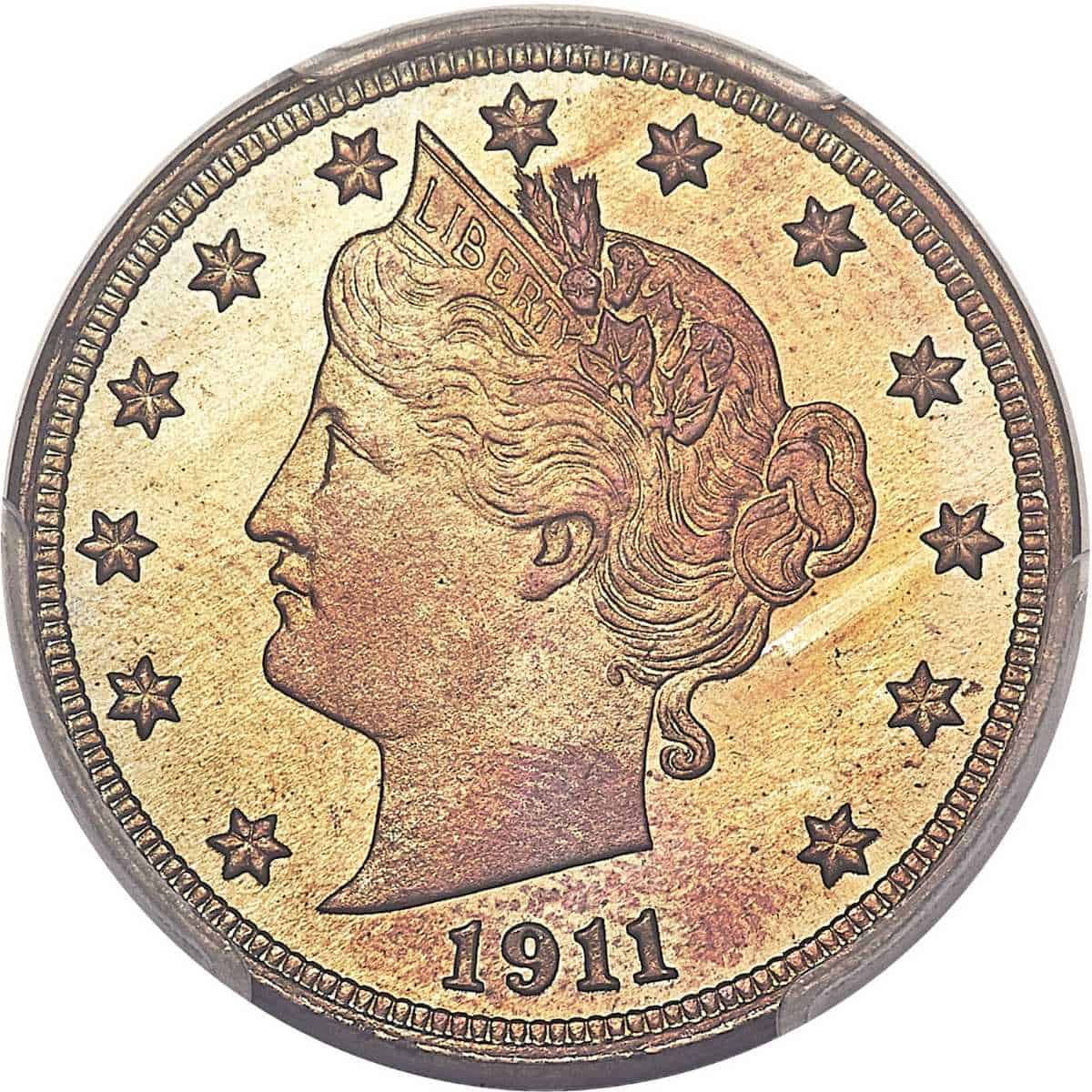
1911 Nickel: Valuable Error Coins
Numismatists have always been fascinated with error coins. Maybe it’s our need to celebrate the incompetence of a big governmental agency, to look at the irregular coins that slipped through the fingers of the U.S. Mint and say, “Ha! They messed up!” Or perhaps it’s the fact that these coins are so rare. But one thing is for certain: error coins are quite valuable.
Below are five valuable error coins that deserve your attention:
1. 1911 Liberty Nickel with Colorful Metal Oxidation: Sold for $7,200
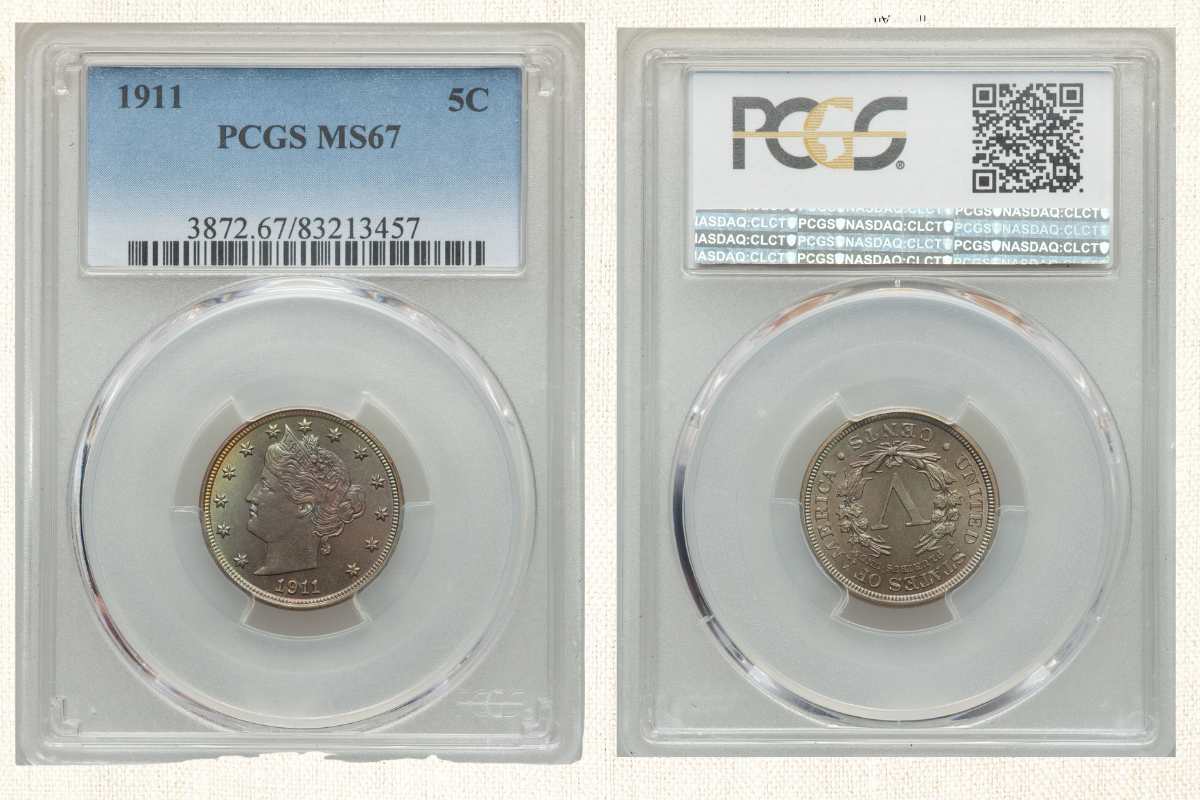
This is less a case of error as much as it is a case of a coin aging gracefully. It’s been over a century since the 1911 Nickels were minted. Some of these coins oxidize to a beautiful wash of rainbow colors. This particular coin shows oxidation on the peripheral regions of the obverse.
2. 1911 Liberty V Nickel with Unusual Over-Stamped Error on Both Faces
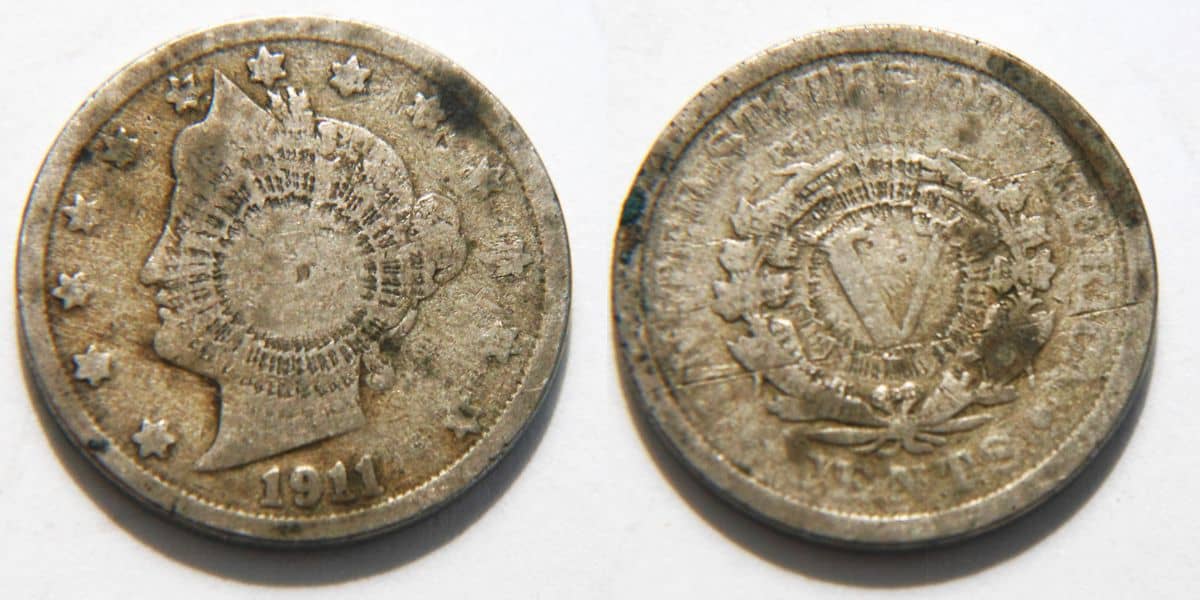
This particular 1911 Liberty Head Nickel has a radial pattern engraved on both sides of the coin. The error is so severe on the obverse that it overshadows Lady Liberty’s hair, crown, ear, and eyes. Besides the radial pattern on the coin’s reverse, there’s a straight groove cutting across the coin, also affecting the lower part of the “V.”
3. 1911 V Nickel with Lamination and Double Die Errors: Selling for $89.95
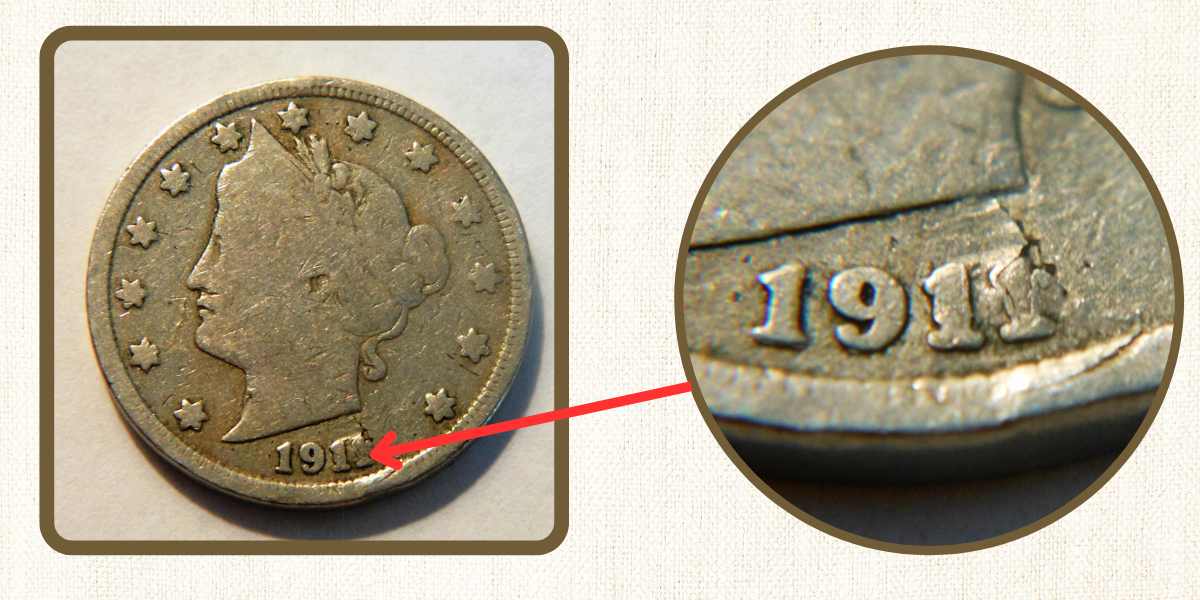
This particular coin has a combination of two errors. The double die error manifests in the year of issue, almost rendering the last “1” of “1911” unreadable. The lamination error appears as a crack cutting from under Lady Liberty’s neck through the last “1” and almost making contact with the rim of the coin.
4. 1911 Liberty Nickel with Large Lamination Error, Selling for $59.99
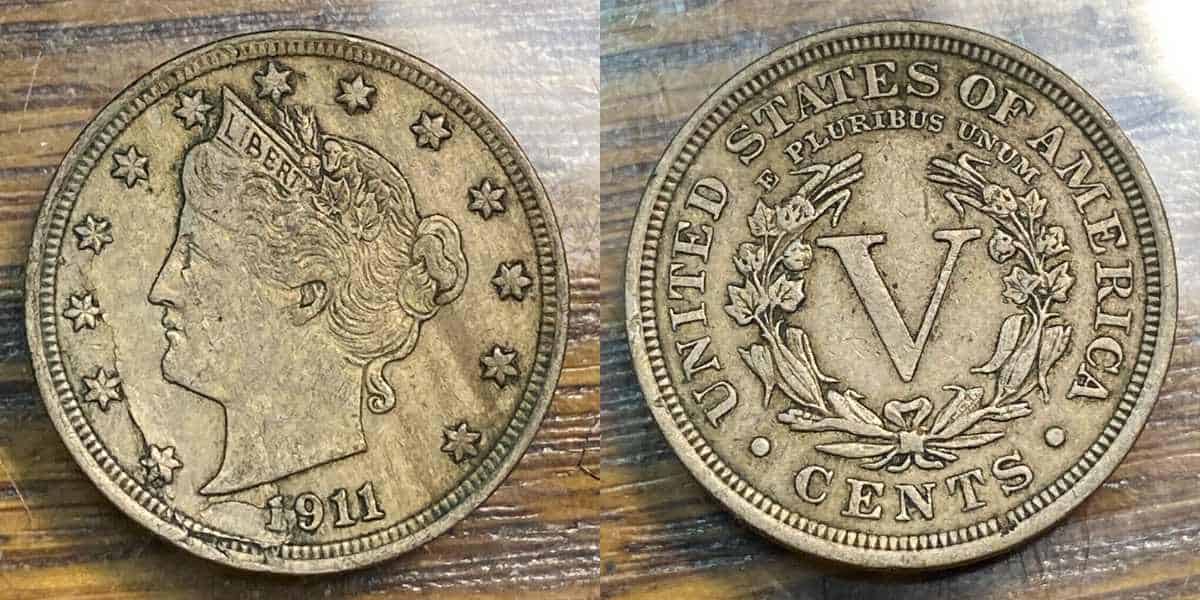
The seller claims that this coin is an extremely fine example of the 1911 Liberty Nickel. But since it’s not graded, it’s hard to verify this claim. The coin seems to have a lamination error, manifesting in the form of a crack, cutting around the lower three stars on the left of the coin.
5. 1911 Nickels that Were Struck Through Debris: Selling for $22
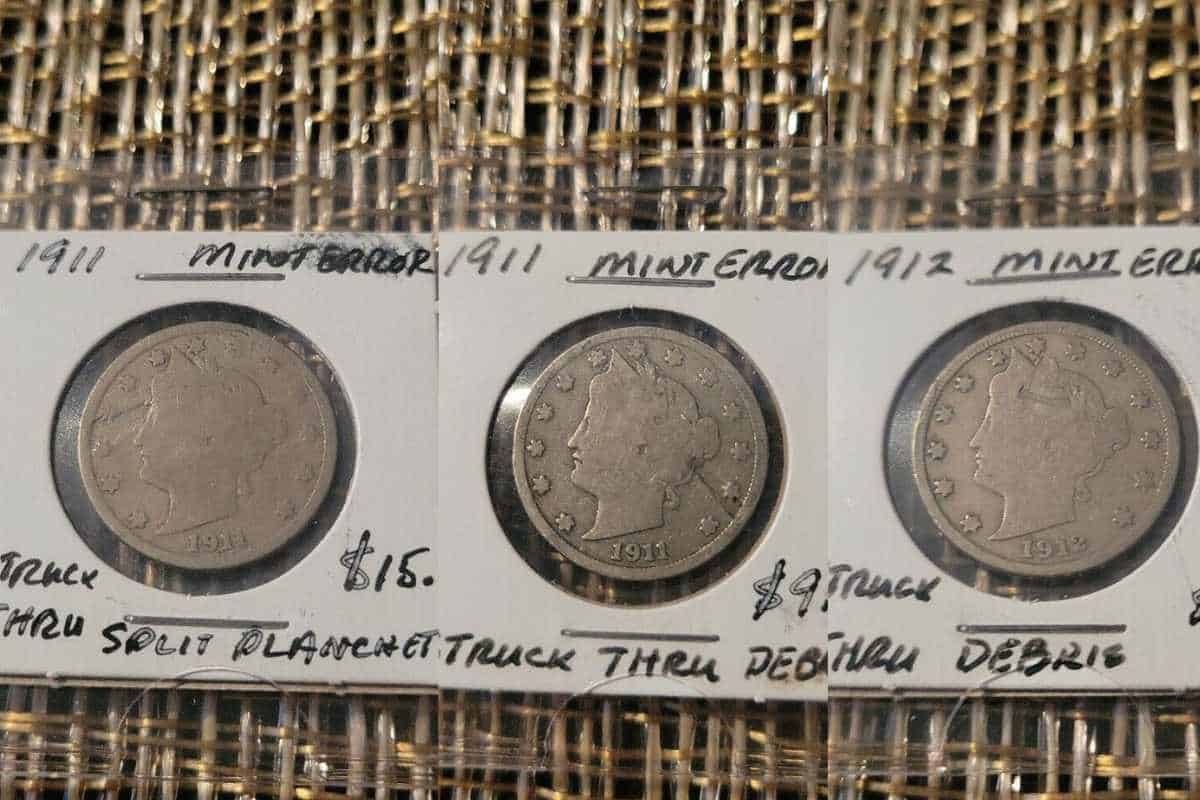
This is a set of three V Nickels: two from the issue year 1911 and one from 1912. All these coins were visibly struck through debris with visible grooves on their obverse faces. All these coins are ungraded, so it’s hard to accurately describe their condition.
But from the pictures, you can tell that the coins suffer severe wear, with Lady Liberty’s ear almost sanded smooth in one of the 1911 coins. Overall, it is not a steep price tag but also not a beautiful set of coins.
1911 Nickel: Is it Worth Collecting?
Absolutely. Good-condition 1911 Nickels fetch decent money, but the true value is in uncirculated coins. In this condition, you want 1911 nickels with an excellent cameo.
Apparently, oxidation drives up the price of mint state 1911 nickels, with brilliant examples selling for thousands of dollars. Even error coins can’t compete with oxidized nickels.
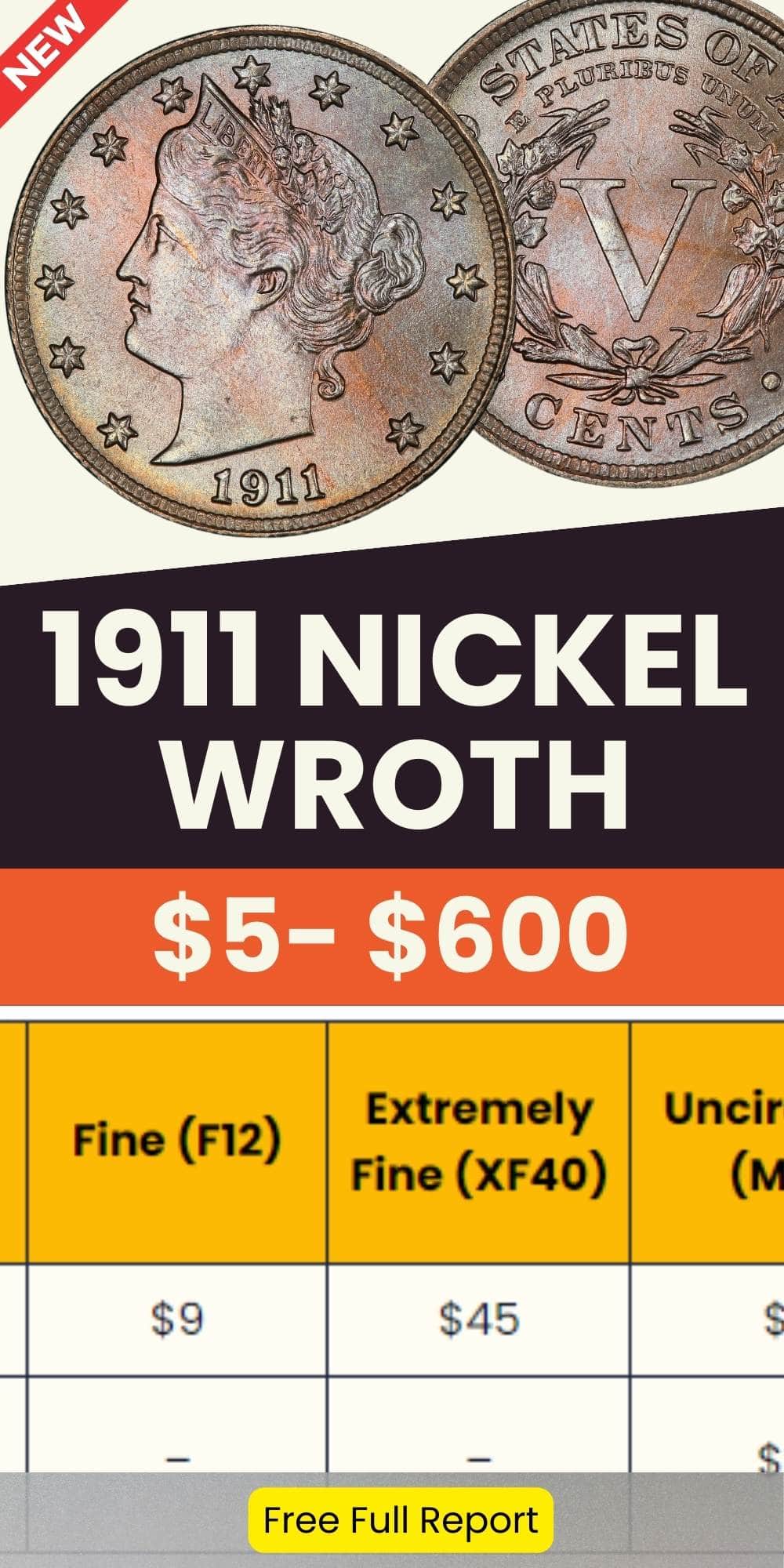

Jenson is a professional numismatist, a dedicated coin collector, a graduate of the College of Business at Oregon State, a life member of the American Numismatic Association (ANA), and an overall coin nerd. He is the founder of Coin Value List.
